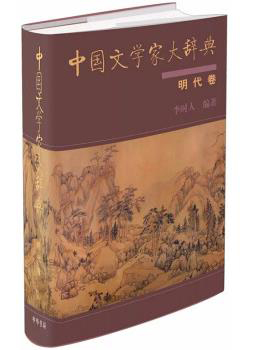Review of Ming Dynasty literary landscape

Dictionary of Chinese Litterateurs: Ming Dynasty Volume
Editor-in-chief: Li Shiren
Publisher: Zhonghua Book Company
In August 1996, Li Shiren, a professor from Shanghai Normal University, accepted an invitation from the Zhonghua Book Company and began editing Dictionary of Chinese Litterateurs: Ming Dynasty Volume. After more than 20 years, the book was finally published in March 2018. Having 1.6 million characters and including 3,046 Ming Dynasty writers, it presents us with a voluminous and vivid picture of Ming Dynasty writers.
In order to fully reflect the overall landscape of Ming Dynasty literature, Li interpreted the concept of “literature” and “litterateur” on the basis of collecting and sorting out all the materials of Ming dynasty writers and literary works. He believes that anything that has “literary significance” can be regarded as a literary work, which is obviously broader than the usual understanding of “literature.” That is, literary works not only include poetry, prose, novels, and drama, but also other works such as philosophical prose, historical prose and certain applied texts, which may not be recognized as literature by all. This way of thinking is more in line with the generation context of ancient Chinese literature and can better explore the rich connotations of ancient Chinese literary concepts.
Therefore, the dictionary is not limited to the records of various historical books when determining the list of literary writers received, not to mention the writers selected in any previous collection of literary works of the Ming Dynasty. Li comprehensively examines various historical documents, such as the collected (selected) works of the Ming dynasty, anthologies, notes, local chronicles, inscriptions on ancient bronzes and stone tablets, and official history, and then redraws the list of “Literary Writers of the Ming Dynasty” based on their literary achievements.
In Li’s view, the biggest problem in Ming dynasty literary and poetic research since the 20th century was inefficiency in the investigations of writers and literary data collection, with only 300 or 400 writers being examined. Through long and arduous investigations, verifications, and inspections of various documentary materials, Li initially determined that more than 3,300 Ming Dynasty writers collected poetry and essays in libraries at home and abroad. Among these, some have only one type of anthology, while some others may have various types of anthologies, especially independent poetry anthologies. Of the 3,300 writers, 2,449 were selected from two classic documents in China while the anthologies of the other 851 writers are preserved in libraries and museums in Japan, Korea and America.
The compilation of this dictionary has gone through a long process. As Li said in his statement, “I have been finding all sorts of literature and documents on my own, and striving to finish the compilation work by honestly selecting, editing, modifying the writers and texts over and over again. You cannot make it unless working hard in a down-to-earth manner.” This honest “study attitude” and “basic approach” are essential for an accomplishment such as this.
(edited by SUI JINGJING)
